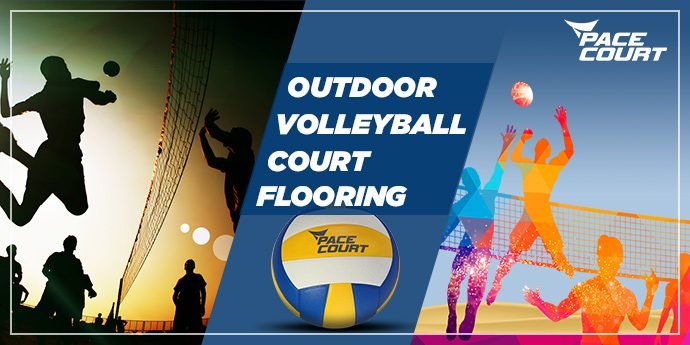Introduction
The modern world is in constant evolution, and the domain of sports is no exception. When we think of volleyball, images of sun, sand, and beaches might come to mind. Yet, volleyball has expanded beyond its sandy origin, reaching various terrains from gymnasiums to specialized outdoor courts. One innovation that has been central to this expansion is the development of modern outdoor volleyball court flooring. This article, brought to you by Pacecourt, delves into the evolution and benefits of these modern court surfaces.
The Evolution of Volleyball Court Flooring
The original game of volleyball, conceived in 1895, played indoors. The game quickly grew in popularity and, with it, came the inception of beach volleyball. The challenge then was to bring the game outdoors without the beach. Early adaptations saw grass and even asphalt courts. But these surfaces had limitations in terms of player safety, performance, and maintenance.
Enter the era of specialized volleyball court flooring. Driven by advances in material science and an understanding of athletes' needs, outdoor volleyball court surfaces underwent rapid innovation.
Acrylic, Synthetic, and Beyond
Today, acrylic and synthetic surfaces, like those offered by Pacecourt, have become a preferred choice for many institutions and private facilities. They offer a plethora of benefits:
- Durability: Unlike asphalt, which can crack over time, or grass, which can become uneven and muddy, modern court surfaces are built to withstand weather conditions and wear & tear.
- Player Safety: A crucial aspect is the shock absorption capacity. It reduces impact on players' joints, minimizing injury risks.
- Performance: These surfaces provide a consistent bounce for the ball and maintain a steady grip for players, ensuring the game remains competitive.
- Maintenance: Modern flooring materials designed for low maintenance, saving time and resources in the long run.
Customization and Aesthetics
Beyond the functional benefits, modern court surfaces also allow for a high degree of customization. Whether you want a court that reflects your institution's colors or a bespoke design, companies like Pacecourt make it possible. This flexibility extends beyond aesthetics. Depending on the region's climate and the players' proficiency levels, the court's friction, bounce, and even light reflection can adjusted.
Environmental Considerations
In today’s eco-conscious world, the sustainability of these court surfaces cannot overlooked. Modern court materials are often recyclable, leading to a reduced carbon footprint. Moreover, the extended lifespan of these surfaces means fewer replacements and lesser waste.
Cost Efficiency
While the initial investment might seem higher than traditional surfaces, the long-term benefits make modern volleyball court flooring a cost-efficient choice. Consider the reduced maintenance costs, the extended lifespan, and the potential medical savings from decreased injury rates.
The Global Perspective
Around the world, from local schools to Olympic arenas, the shift toward specialized volleyball court surfaces is evident. Institutions recognize the multifaceted benefits of these courts – benefits that extend to players, spectators, and administrators alike.
Conclusion
Outdoor volleyball has come a long way from its humble beginnings on the beach. Today, thanks to innovations by companies like Pacecourt, players can enjoy the game on state-of-the-art surfaces tailored for performance, safety, and aesthetics. As the game continues to grow in popularity globally, so too will the demand for the best playing surfaces available. With modern outdoor volleyball court flooring, the future looks brighter, safer, and more competitive than ever.



